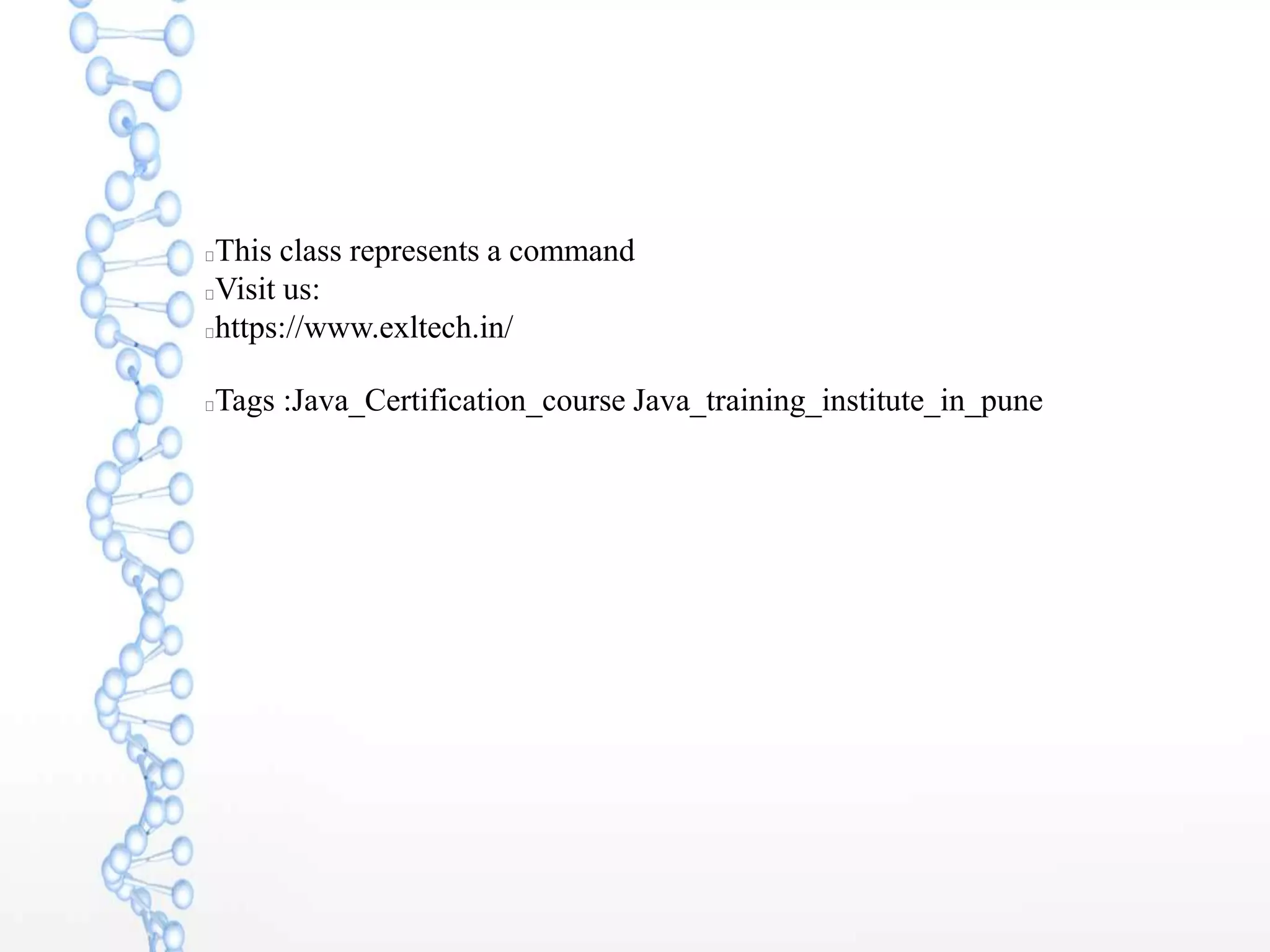The document explains the implementation of the Command design pattern in Java, emphasizing its role in creating flexible, loosely coupled applications. It outlines the key terminology associated with the pattern, such as client, invoker, recipient, and command, and illustrates how decoupling enhances code quality. An example Java program demonstrates the practical application of the Command pattern, making it easier to manage commands like create and delete without affecting the client code.
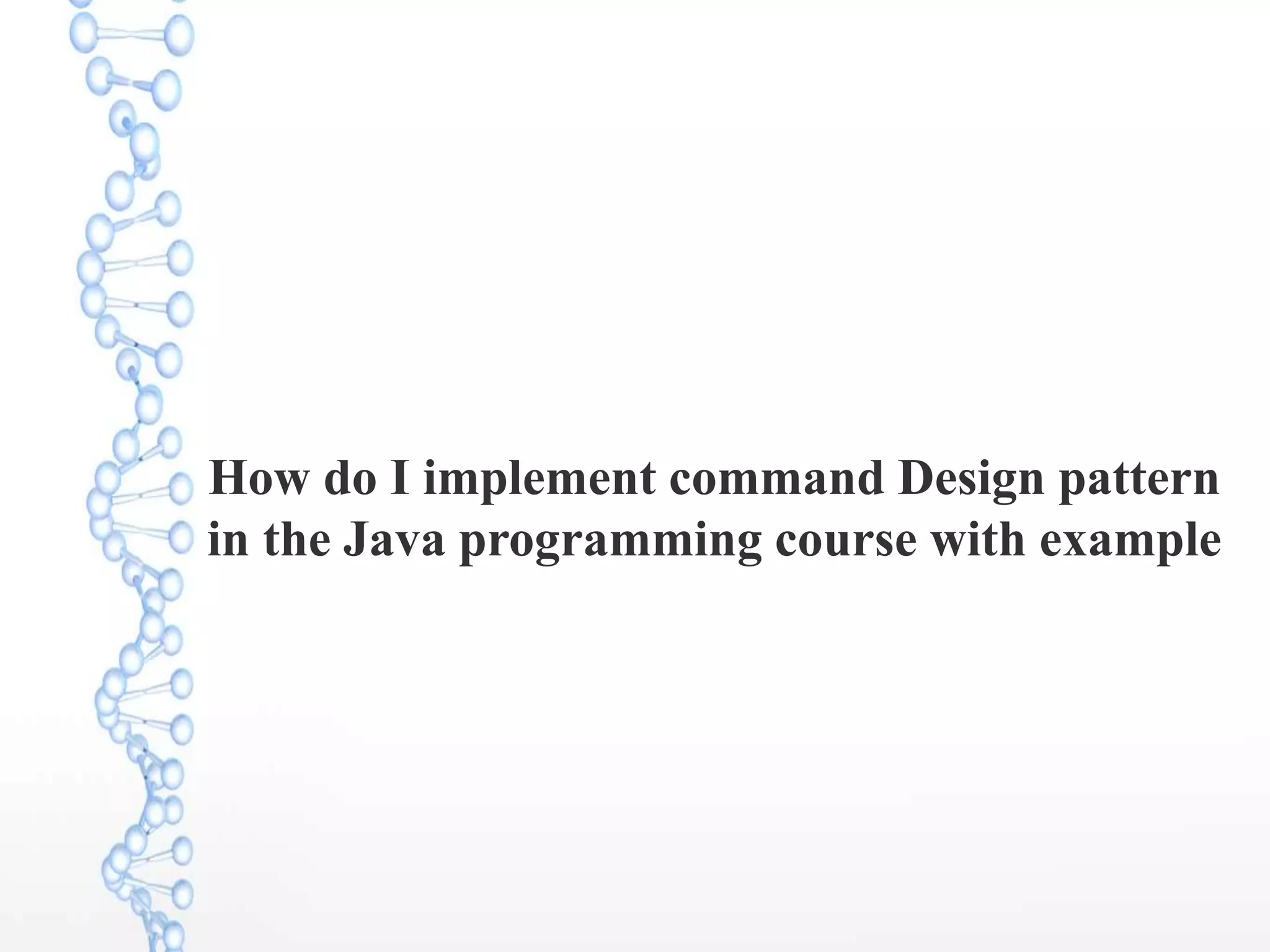
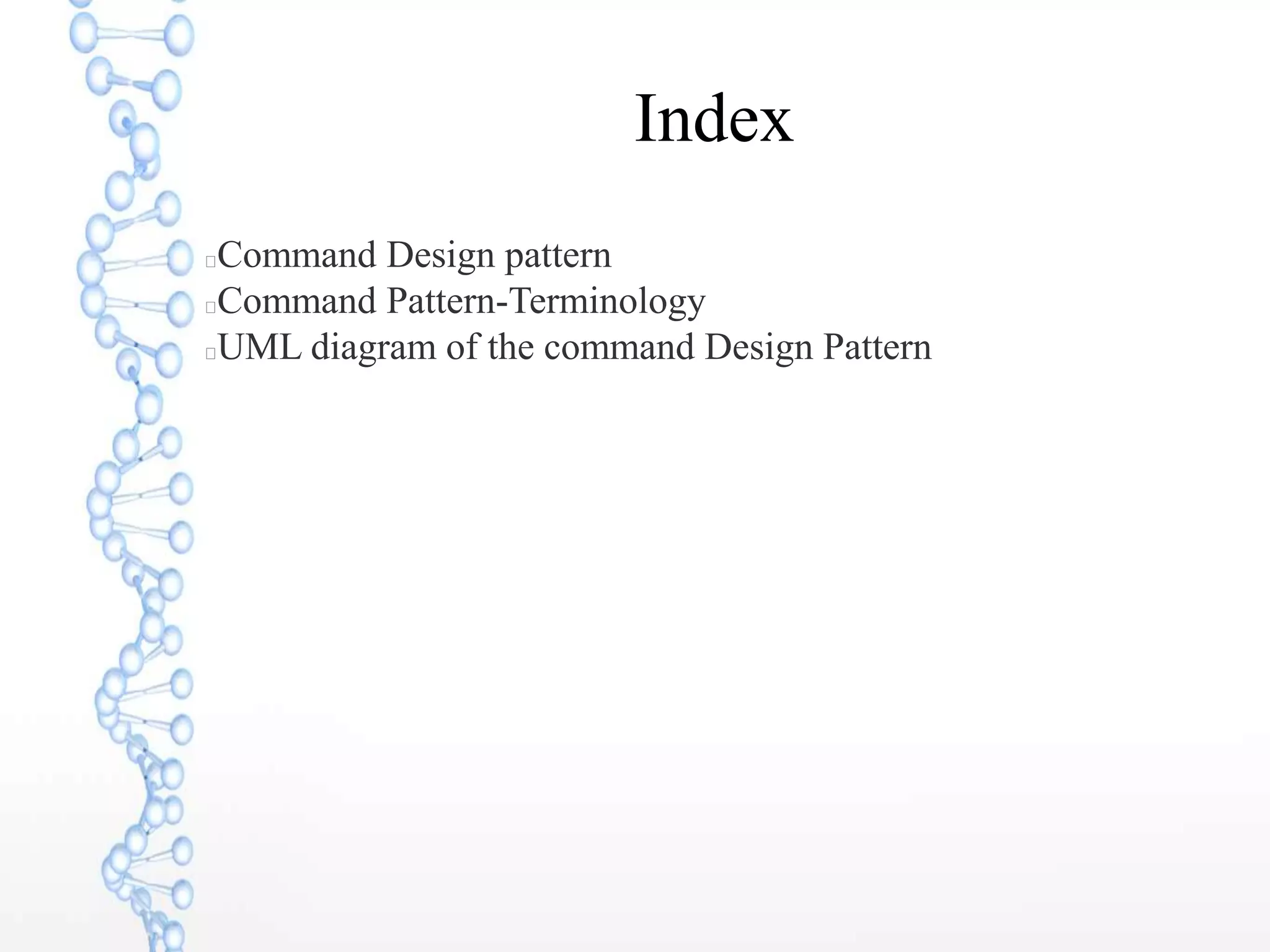

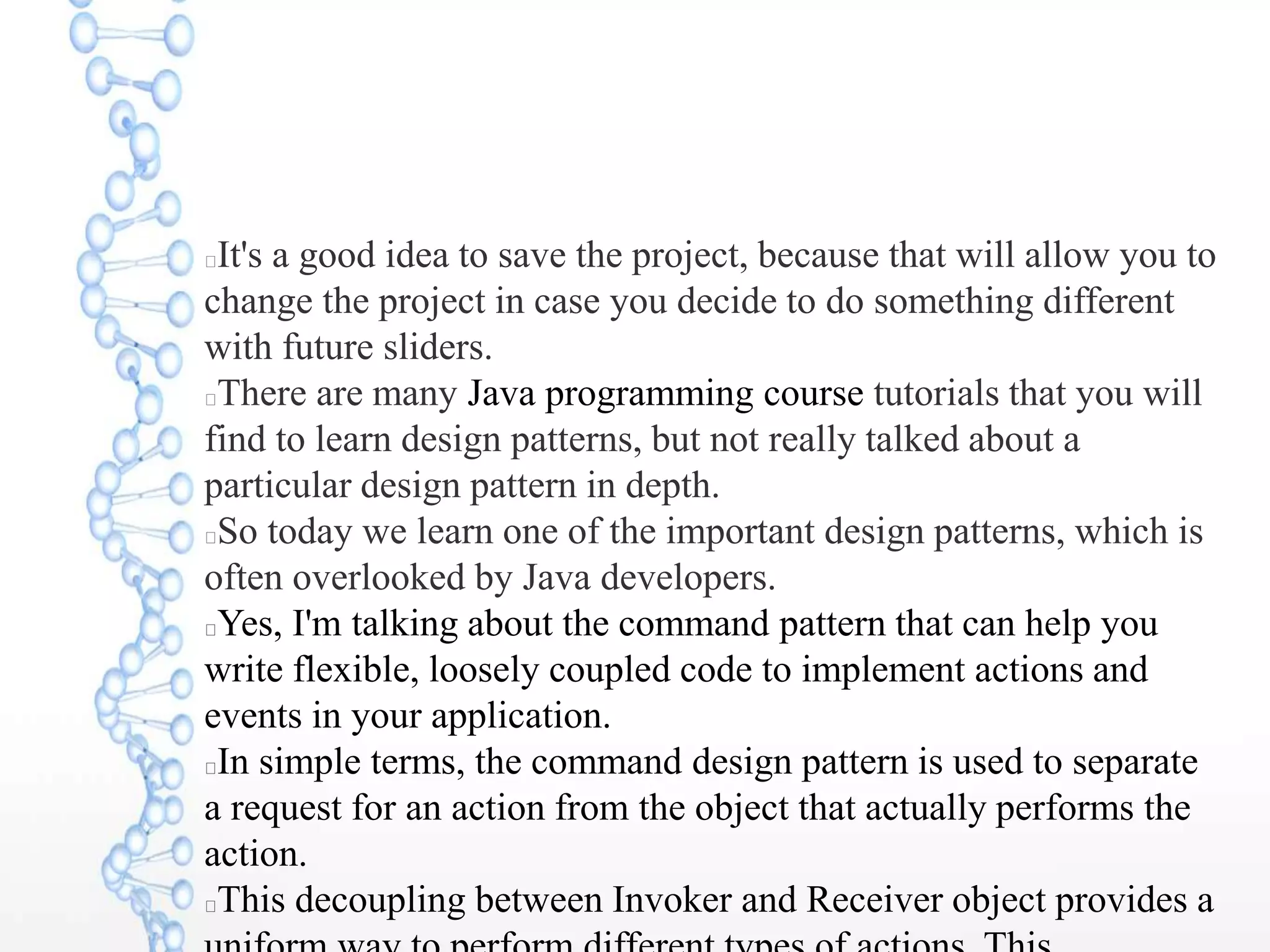
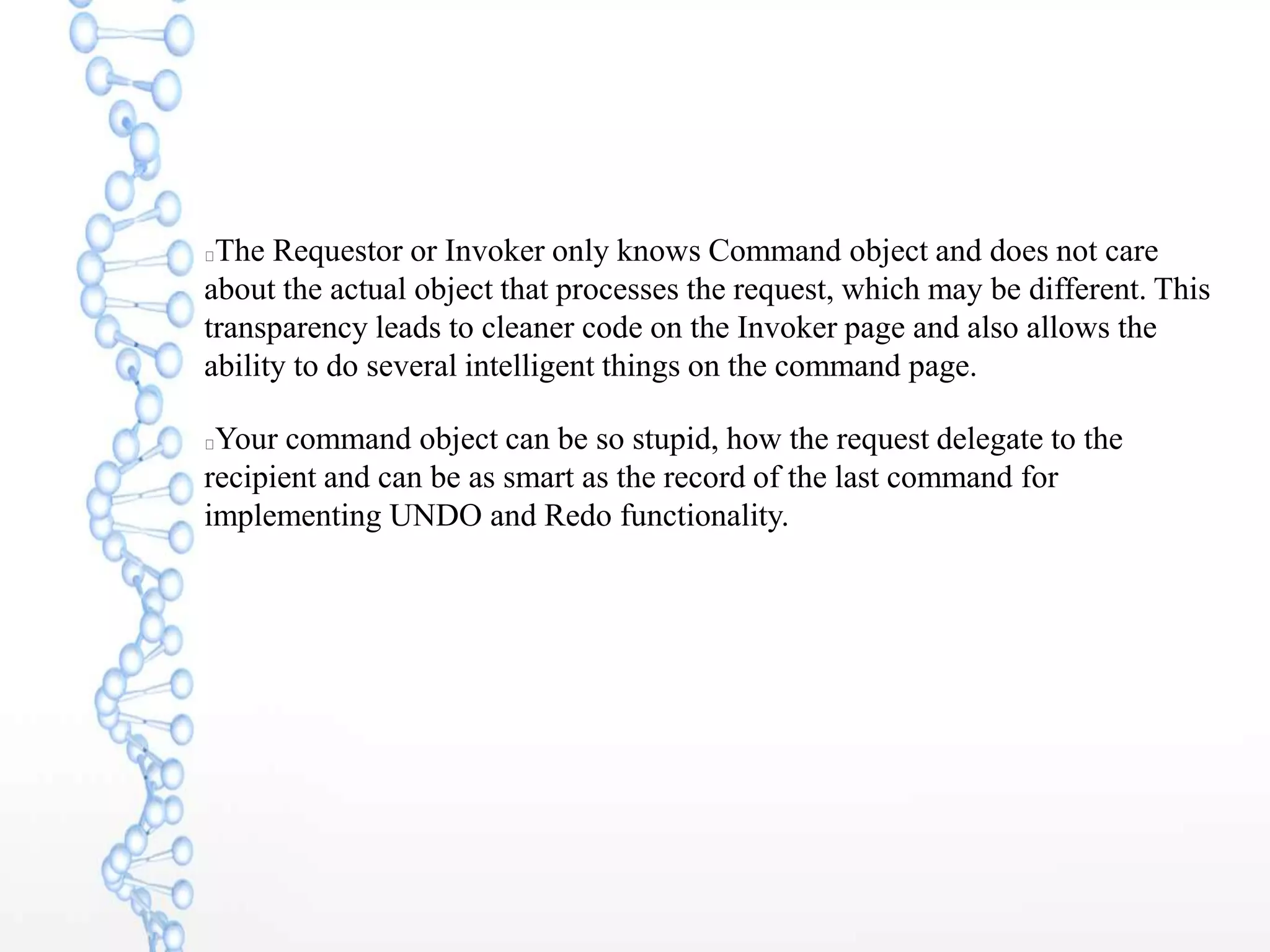
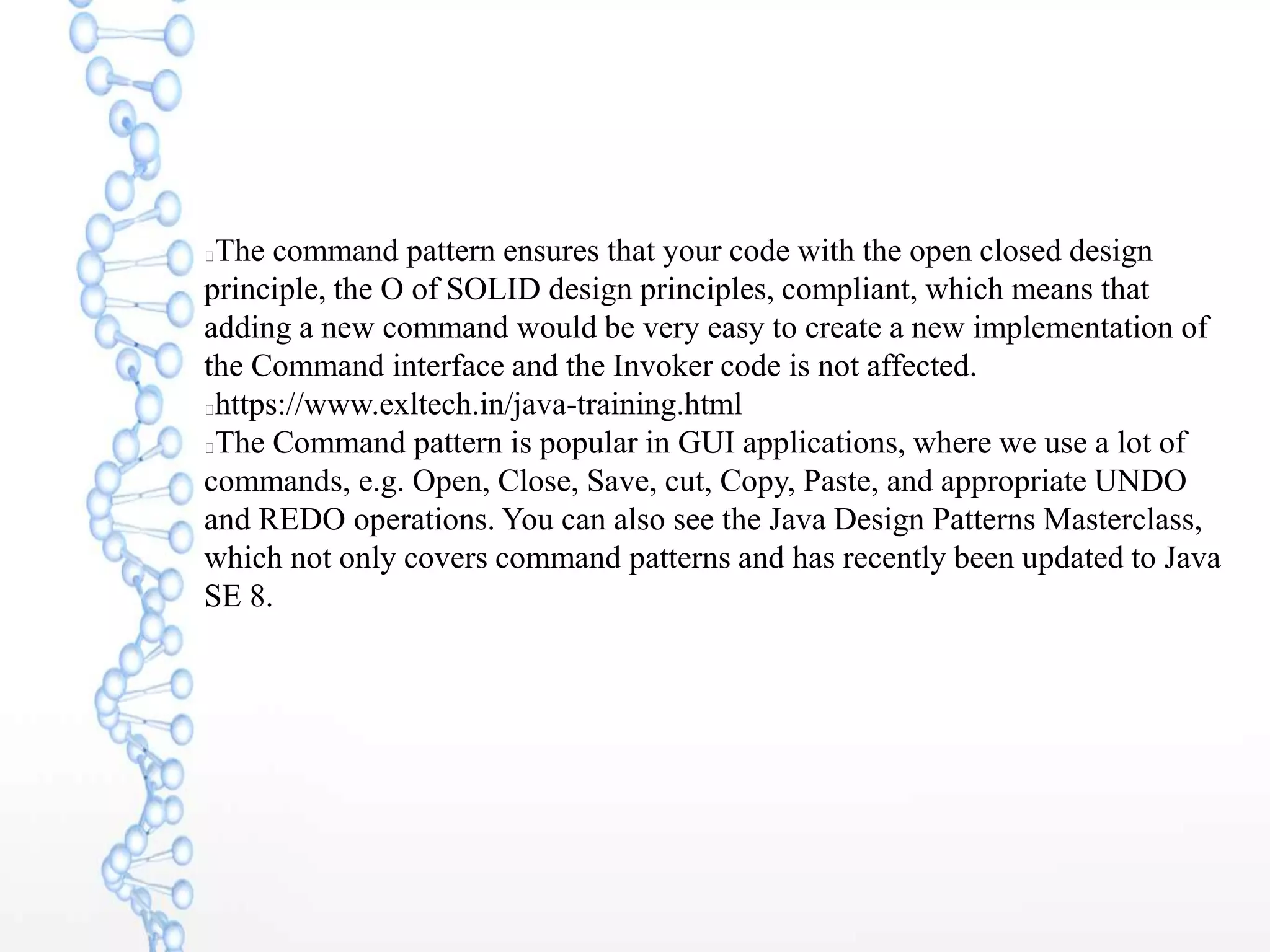
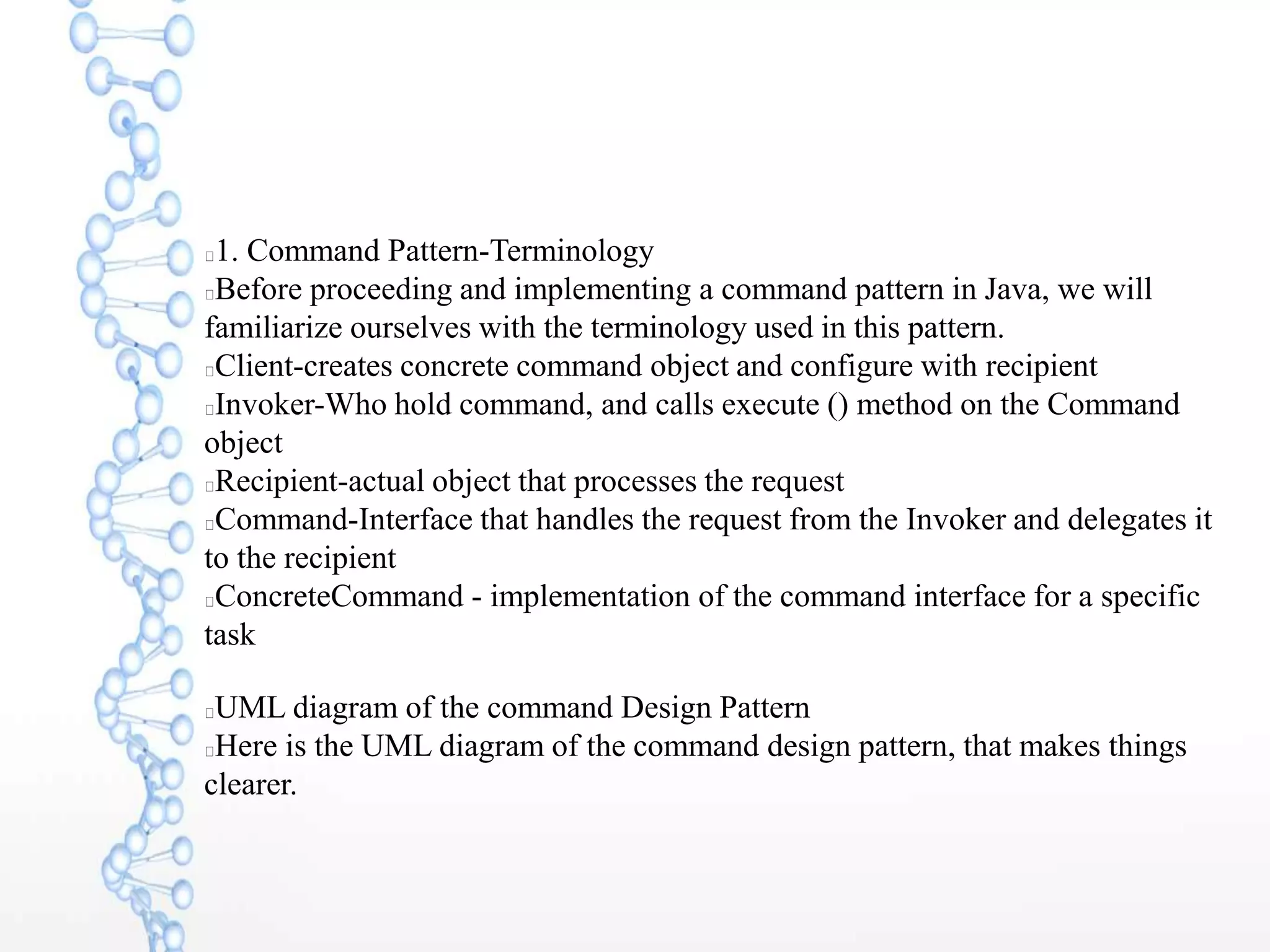
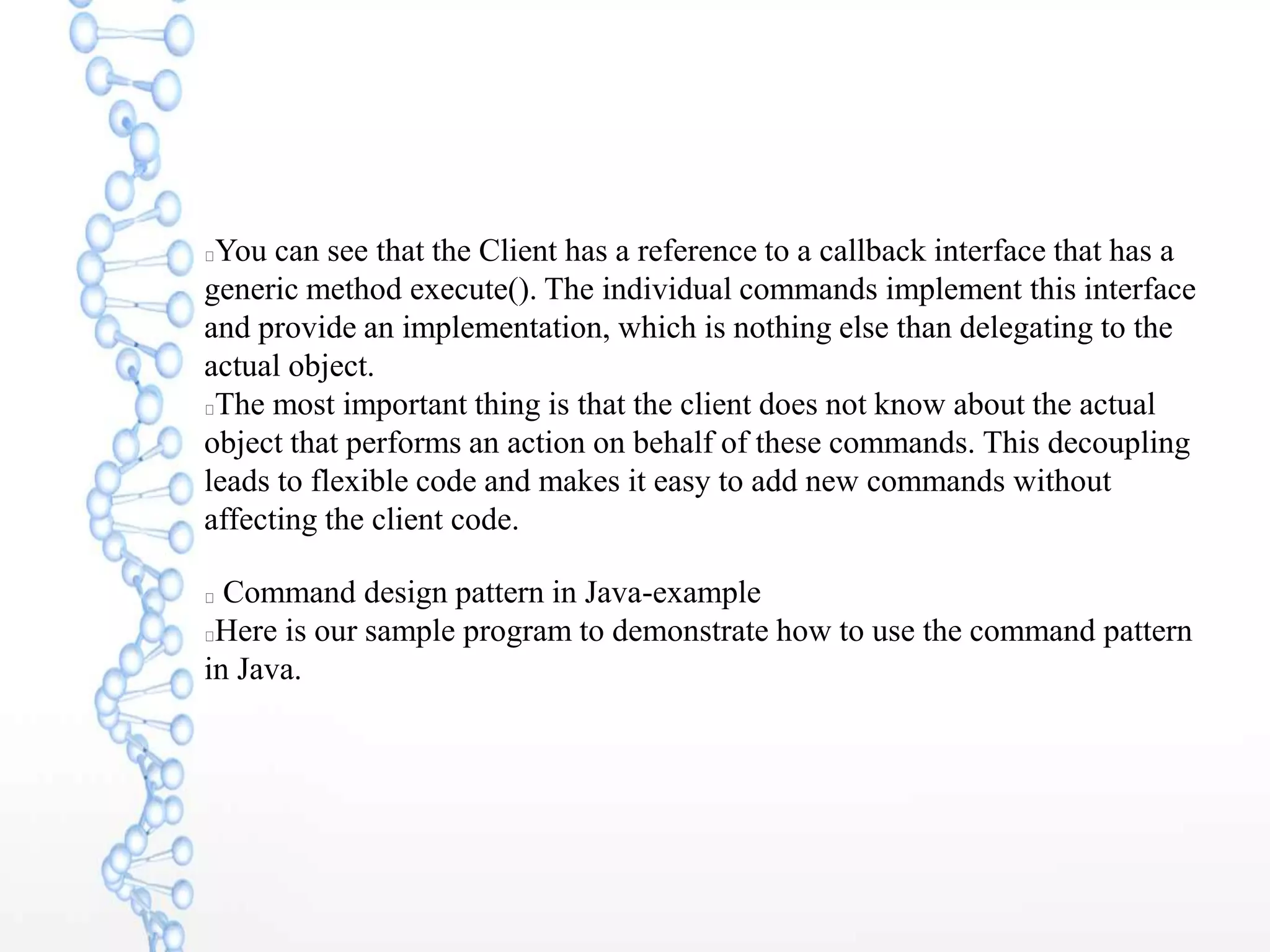

![/** * Java program to implement command design patterns with example. * * @author Paul Javin */ public class Client { private static final Logger logger = LoggerFactory.getLogger (Client.Class); public static void main (String args[]) { // Client creates the Invoker object, command object and configure it Menu menu = new menu(); Menu.setCommand ("Create", new CreateCommand()); Menu.setCommand ("Delete", new DeleteCommand());](https://image.slidesharecdn.com/howdoiimplementcommanddesignpatterninthejavaprogrammingcoursewithexample-190620105851/75/How-do-i-implement-command-design-pattern-in-the-java-programming-course-with-example-10-2048.jpg)
